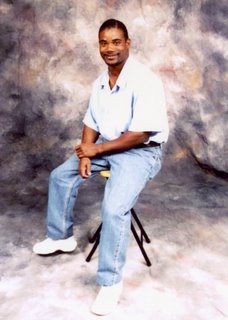Rehabilitating CDCR with Honor
I realize that many in society are hard pressed not to believe that all prisoners are dangerous, violent or incorrigible.It is true that prisons are dangerous places—for all, guards and prisoners alike. California’s prisons, in particular, make for perfect peril by a lethal combination of chronic overcrowding, repressive idleness and an obstinate, embittering model of punishment, and punishment only.
Prior to forfeiting my seat in society in 1989, I had always assumed the California Department of Corrections and Rehabilitation meant just that, a place where the broken in society were sent to be fixed—or to at least have rehabilitation available if desired.
The reality of my fallacy hit me square in the face when I was sent—as a 26-year-old first-timer—to the notorious state prison called Pelican Bay.
I was given no plan or suggestion for self-improvement. I was not encouraged to do anything positive and, to my surprise, classes one would think to be a given in the department of “corrections” were starkly absent; no anger management despite the rampant violence, no gamblers’ anonymous to counter that pervasive and addictive vice—that all too often leads to violent repercussions for unpaid debts, not even victim orientation to instill some reality and empathy for the hellish consequences of victimization.
The only admonishment received was from fellow prisoners just as ignorant and misguided as myself: this prison clique is warring with that prison clique, or we aren’t on speaking terms with this race, and so and so is gonna get hit today for not paying a dope debt. Those were the extent of my many advisements.
Despite the haunting deprivations and neglect by prison officials, I desired more than the daily, vexing emptiness that surrounded me. My drug dealing days were shipwrecked along with my freedom. I certainly didn’t want to continue that lifestyle in prison. Neither was gang-banging an option for me in prison, or ever. Like the outside world, all of the street-hustle paths of prison led to darkness.
Then, in 2003, by pure serendipity, I was transferred to the state prison at Los Angeles County, a facility where a few reform-minded men cut through the institutional thicket of obstacles to open a route towards self-amendment. It was then that I eventually learned of a little known secret called the Honor Program.
Initiated in 2000, this conglomerate of men, tired of the madness and irresponsibility, proposed a bright vision for change that would stand in stark contrast to the damaging model of force and violence utilized for prisoner control.
The most glaring distinction of the Honor Program was that it was completed voluntary. Participants had to agree to random drug tests, to relinquish gang ties and racial politics, and to draw up a program plan.
As in the past, prisoners gave me a heads up, but the language and tone was much more inspiring: “This yard is different, man. We don’t [gang] bang here; we respect all races and push the positive,” I was told.
As the days peeled away, I was astonished to see integrated sports teams on the yard, and I kind of felt neurotic as I searched in vain for any hint of tension. Here prisoners utilize each other’s skills to teach one another through peer-education, and are given leeway by progressive staff to do so. Writing class, critical thinking, yoga and Spanish are all offered, to name a few.
The success has been indisputable. In its first year of existence, a study was conducted by prison officials that revealed a decrease in weapons infractions by 88 percent, and violence dropped by 85 percent. The Honor Program had saved CDCR (and taxpayers) $200,000.
To our dismay and disappointment, the Honor Program has been virtually ignored by past secretaries of CDCR, refusing to make it official. Still, ever so optimistic, it is our hope that the new secretary, Mathew Cate, will adopt this self-sufficient, money-saving program and secure its longevity.
It is without question that rehabilitated prisoners not only make prisons safer, but society is also made safer upon the release of the majority of those who will eventually be paroled.
Sources:
www.prisonhonorprogram.org
www.cdcr.ca.gov
Faucett, Richard, “Honor Program Success,” Los Angeles Times, 2003
Lawrence, Susan, “Creating A Healing Society,” (Elite Books, Santa Rosa, CA: 2006): p. 101
Widdison, Marissa, “Bodies Imprisoned, Minds, Go Free,” Antelope Valley Press, October 7, 2006
Senate Bill 299, The Honor Program, 2006 (vetoed by Governor Arnold Schwarzenegger in 2006)


0 Comments:
Post a Comment
<< Home